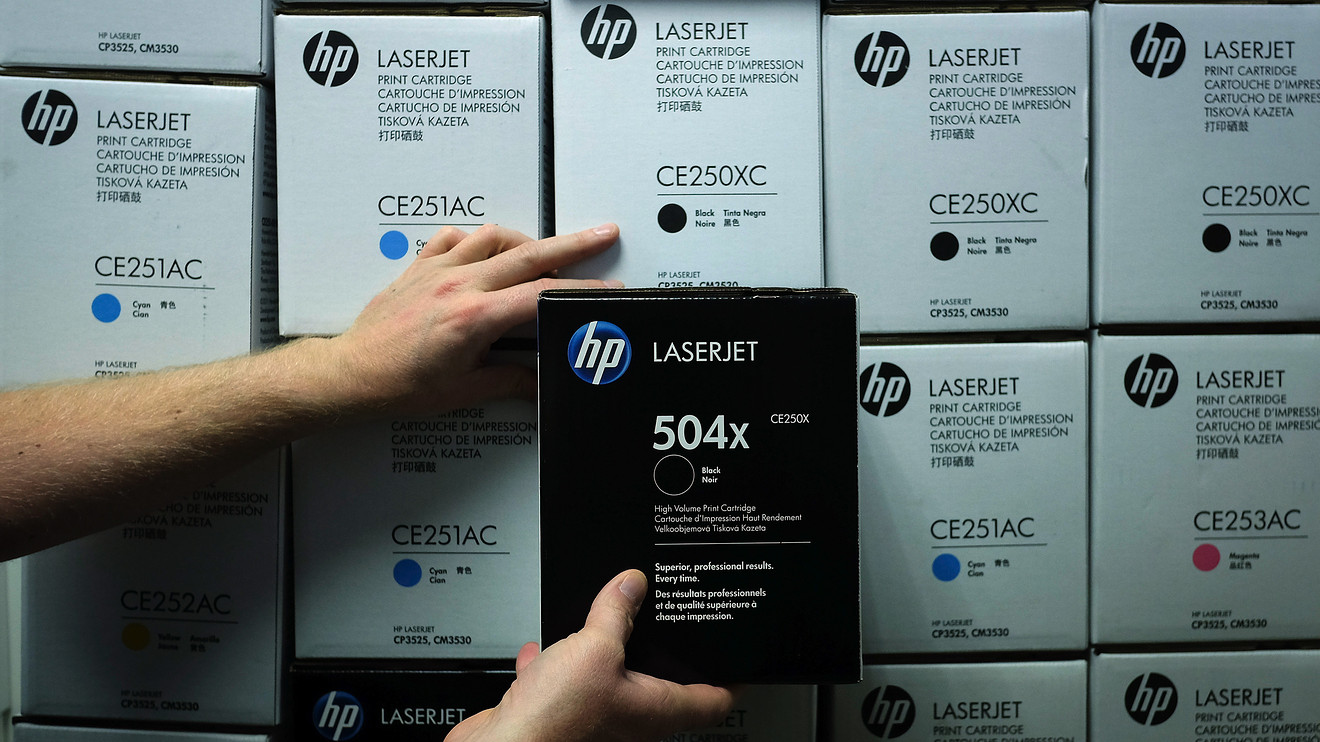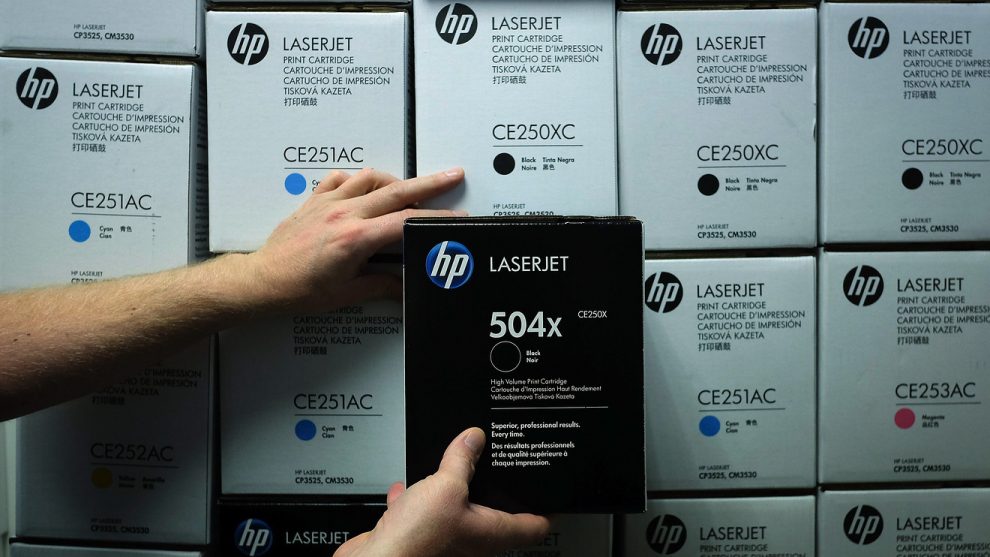
HP Inc.’s printing business could be finally running out of ink, thanks to COVID-19.
Profits in the venerable Silicon Valley tech company’s struggling printer business dipped below profits from PCs for the first time in at least five years in the most recent quarter, as most corporate offices shut down during the coronavirus pandemic. The current quarter is expected to be even worse for printing, once the company’s cash cow.
HP HPQ, +0.35% reported an 11% drop in its fiscal second-quarter revenue Wednesday, as supply-chain disruption issues and a loss of corporate PC and printer sales impacted the quarter. The company’s stock tumbled 5.7% in after-hours trading.
Even though HP’s laptops have been in demand as more people work from home, the company said that sheltering in place was having a negative impact on its corporate printing business. Printing, especially printer supplies, has long been a money-maker for HP, which sells high-margin ink cartridges to its printer customers. But in the past few years, as both consumers and businesses print less, printing revenue and profits have been on a gradual decline. That led the smaller Xerox Holdings Corp. XRX, +3.78% to pursue a hostile takeover offer earlier this year in pursuit of growth, an offer that was ultimately quashed by the global pandemic.
Also read:How HP is trying to resuscitate a dying business.
“In commercial print, including office and graphics, we saw a significant slowdown in late March as offices closed and large events and trade shows were canceled,” HP Chief Executive Enrique Lores told analysts on a conference call. “While we believe that office and graphics usage will rebound when businesses fully reopen, we expect that Q3 will be similar to April. And thus we expect that our financial results will be more negatively impacted in Q3 than Q2.”
In the fiscal second quarter, HP said that its pre-tax profits in printing were $548 million, down nearly 35% from $839 million in the year-ago quarter. Pre-tax profits for PCs, however, were up 43% to $552 million, from $385 million in the year-ago period.
Printing revenue also saw a steep drop, tumbling 19% to $4.1 billion, compared to a 7% decline in revenue for personal systems, to $8.3 billion. Notebook sales were flat while PCs and workstations, used in the office, both fell by double digits. HP said it did see strong demand in consumer printing and supplies, as consumers went into lockdown around the world, but it was not able to fulfill all of its orders because of manufacturing disruptions.
One analyst asked if the near parity in profits between printers and PCs was structural or whether HP could return to its historical profit mix, with PCs making up about one-third of overall earnings. Lores said that the setback in printing was temporary.
“We’re dealing with larger supplies’ revenue declines, driven by commercial, as well as commercial hardware declines,” he said. “But once the market begins to recover and workers go back to the office, we would anticipate that those margins would normalize back into that 16% to 18%.”
But that’s a big if. Some workers may never go back to the office, with companies such as Twitter Inc. TWTR, -2.76% and others telling their workers they can work from home indefinitely. Stewart Butterfield, the CEO of Slack Technologies WORK, -0.92% , recently told MarketWatch that he sees a far less-populated office space in the future.
If so many workers don’t go back to the office, that could also put a big crimp in HP’s corporate printing business, as well as sales of its computers for the office. That could spell a real problem for HP and other companies providing products for office use, and it could mean an even steeper decline for the once lucrative printing business.











Add Comment